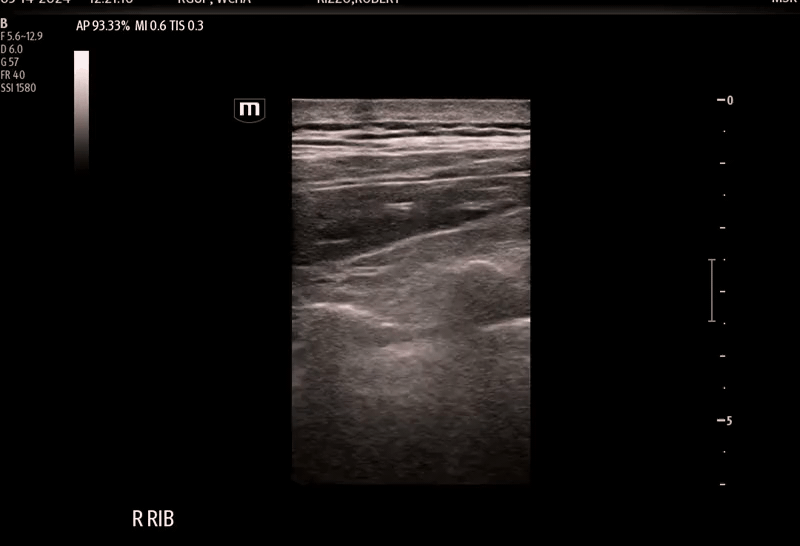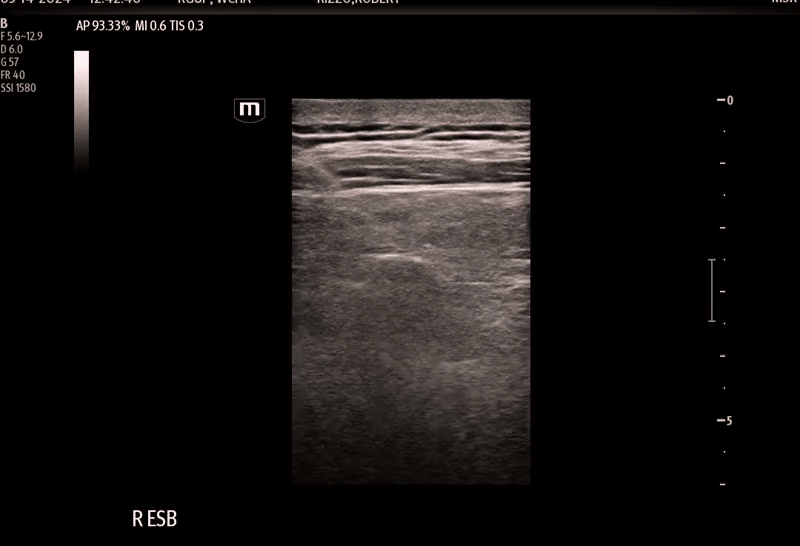Erector Spinae Nerve Block
Written by: Dr. Richa Gupta
Edited by: Dr. Joann Hsu
Case: 59 yo male presents with severe abdominal pain, diaphoretic and asking for pain medication.
Exam: Patient is yelling in pain, tender upper abdomen.
Chart review shows patient has recurrent pancreatitis and new imaging shows worsening pancreatitis as well. Patient continues to report significant pain despite multiple doses of dilaudid, what else can you offer him?
What about an erector spinae nerve block?
Let’s review anatomy first.
Erector spinae nerve blocks aim to inject anesthetic just above the transverse process.
Depending on the target of pain control, the level of block may differ.
More superiorly, you will need to enter through the trapezius, rhomboid and then erector spinae muscles to reach the tranverse process.
More inferiorly, you may enter through latissimus dorsi instead.
Anesthetic will spread anteriorly in a craniocaudal fashion and cover 3-4 levels above and below injection site.
Procedure is done with a linear probe held sagittally with probe marker facing cephalad to patient.
The nerve block is done in-line and can be performed with either a superior or inferior approach.
Prior to starting your procedure, it is important to identify your ribs turning into transverse process so you know that you are in the correct area for block.
Ribs will look more rounded than the transverse process and are located more lateral to midline - demonstrate this by sliding your probe laterally from midline.
Transverse processes will appear flatter and closer to midline.
Back to the patient.
Here ribs are identified by their rounded hyperechoic line with lung sliding seen between ribs.
As you move probe from lateral to medial at level of desired block, the change is seen from the rounded hyperechoic shape of rib to the flatter hyperechoic line seen here identifying the transverse process.
Needle is inserted through muscle layers aiming for transverse process.
Anesthetic is injected just above the transverse process.
As this patient had pancreatitis and midline pain, bilateral erector spinae blocks were performed at the T6 level. On reassessment, patient reported decrease in pain!
This is a relatively new block, but here are some other indications for the erector spinae block:
Posterior, lateral, and anterior thoracic wall
Posterior rib fractures
Happy scanning!
References:
Buttner, R., Cherian, N., & Cherian, R. B. and N. (2021, November 30). Erector spinae plane block. Life in the Fast Lane • LITFL. https://litfl.com/erector-spinae-plane-block/
Elkoundi, A., Eloukkal, Z., Bensghir, M., Belyamani, L., & Lalaoui, S. J. (2018). Erector spinae plane block for hyperalgesic acute pancreatitis. Pain Medicine, 20(5), 1055–1056. https://doi.org/10.1093/pm/pny232
Erector spinae plane nerve block. NYSORA. (2024, February 8). https://www.nysora.com/erector-spinae-plane-block/
How to perform an erector spinae plane block - page 2 of 4. ACEP Now. (2023, March 3). https://www.acepnow.com/article/how-to-perform-an-erector-spinae-plane-block/2/
Mantuani, D., Josh Luftig, P. A., Herring, A., Mian, M., & Nagdev, A. (2020). Successful emergency pain control for acute pancreatitis with ultrasound guided Erector Spinae Plane Blocks. The American Journal of Emergency Medicine, 38(6). https://doi.org/10.1016/j.ajem.2020.02.005







